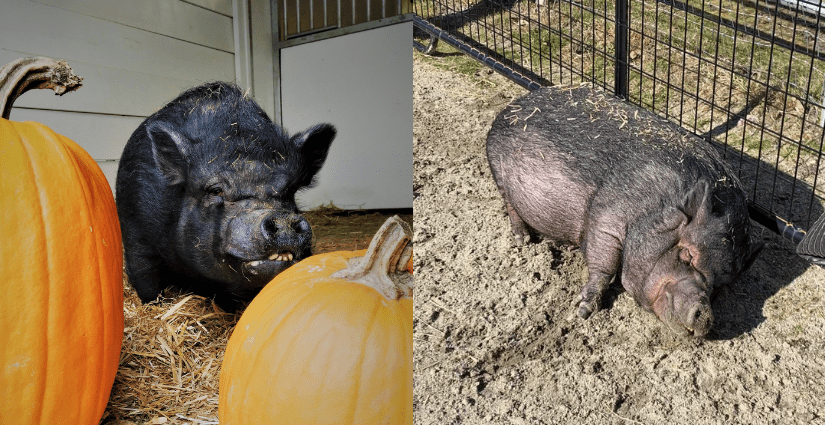Welcome to Facts Vibes! Today, we’re diving into the fascinating world of pork. From its rich history to its culinary versatility, pork is a staple in many cultures. Join us as we uncover interesting facts about this delicious and often underrated meat.
Pork: A Closer Look at the Facts
When it comes to pork, there are a few key facts that are important to consider. First and foremost, pork is a widely consumed meat around the world, known for its versatility in cooking and its rich flavor. However, it’s essential to be aware of certain health considerations when consuming pork. Pork is a rich source of protein, vitamins, and minerals, such as thiamine, niacin, riboflavin, vitamin B6, phosphorus, and iron. However, it can also be high in fat, particularly saturated fat, which is linked to an increased risk of heart disease. As such, it’s crucial to consume pork in moderation and opt for lean cuts when possible. Additionally, proper cooking and handling of pork are essential to avoid the risk of foodborne illnesses such as trichinosis. By being mindful of these facts, individuals can make informed choices about including pork in their diets.
Most popular facts
Pork is the most widely consumed meat in the world.
True.
The United States is the third largest producer of pork in the world, after China and the European Union.
True. The United States is the third largest producer of pork in the world, after China and the European Union.
A 3-ounce serving of pork tenderloin is an excellent source of protein, providing about 22 grams.
A 3-ounce serving of pork tenderloin is an excellent source of protein, providing about 22 grams.
Pork is a good source of vitamins and minerals, including thiamine, niacin, riboflavin, vitamin B6, phosphorus, and zinc.
Pork is a good source of vitamins and minerals. It contains thiamine, niacin, riboflavin, vitamin B6, phosphorus, and zinc.
Different cuts of pork have varying fat content, with lean cuts like pork loin and sirloin containing less fat than fattier cuts like pork belly.
Lean cuts like pork loin and sirloin contain less fat than fattier cuts like pork belly.
Pork is a versatile meat that can be prepared in numerous ways, including grilling, roasting, braising, and sautéing.
Pork is a versatile meat that can be prepared in numerous ways, including grilling, roasting, braising, and sautéing.
The consumption of undercooked pork can lead to foodborne illnesses such as trichinosis, caused by the parasite Trichinella spiralis.
Consuming undercooked pork can lead to foodborne illnesses such as trichinosis, caused by the parasite Trichinella spiralis.
The “other white meat” advertising campaign was introduced by the National Pork Board in the 1980s to promote the benefits of pork as a lean meat option.
The “other white meat” advertising campaign was introduced by the National Pork Board in the 1980s to promote the benefits of pork as a lean meat option.
Pork production has a significant environmental impact due to issues such as water usage, waste management, and greenhouse gas emissions.
Pork production has a significant environmental impact due to issues such as water usage, waste management, and greenhouse gas emissions.
Some cultures consider pork to be taboo due to religious or cultural beliefs, while others incorporate it prominently in their culinary traditions.
Some cultures consider pork to be taboo due to religious or cultural beliefs, while others incorporate it prominently in their culinary traditions.
The term “pork” refers to meat derived from domestic pigs, including cuts such as ham, bacon, pork chops, and pork ribs.
The term “pork” refers to meat derived from domestic pigs, including cuts such as ham, bacon, pork chops, and pork ribs.
Pork has been a staple food in many cuisines around the world for centuries, with dishes like Chinese char siu, German bratwurst, and Mexican carnitas showcasing its culinary diversity.
Pork has been a staple food in many cuisines around the world for centuries, showcasing its culinary diversity in dishes like Chinese char siu, German bratwurst, and Mexican carnitas.
The USDA recommends cooking whole cuts of pork to an internal temperature of 145°F (63°C) with a three-minute rest time, and ground pork to 160°F (71°C).
The USDA recommends cooking whole cuts of pork to an internal temperature of 145°F (63°C) with a three-minute rest time, and ground pork to 160°F (71°C).
The pork industry faces ongoing scrutiny regarding animal welfare, antibiotic use, and sustainable farming practices.
The pork industry faces ongoing scrutiny regarding animal welfare, antibiotic use, and sustainable farming practices.
The global demand for pork continues to rise, driven by factors such as population growth, urbanization, and changing dietary preferences.
The global demand for pork continues to rise, driven by factors such as population growth, urbanization, and changing dietary preferences.
In conclusion, pork is a versatile and nutritious protein that plays a significant role in many cuisines around the world. It is important to be aware of the facts about pork production and consumption in order to make informed choices for our health and the environment. By understanding the nutritional benefits and potential risks associated with pork, individuals can make informed decisions about including it in their diet.
